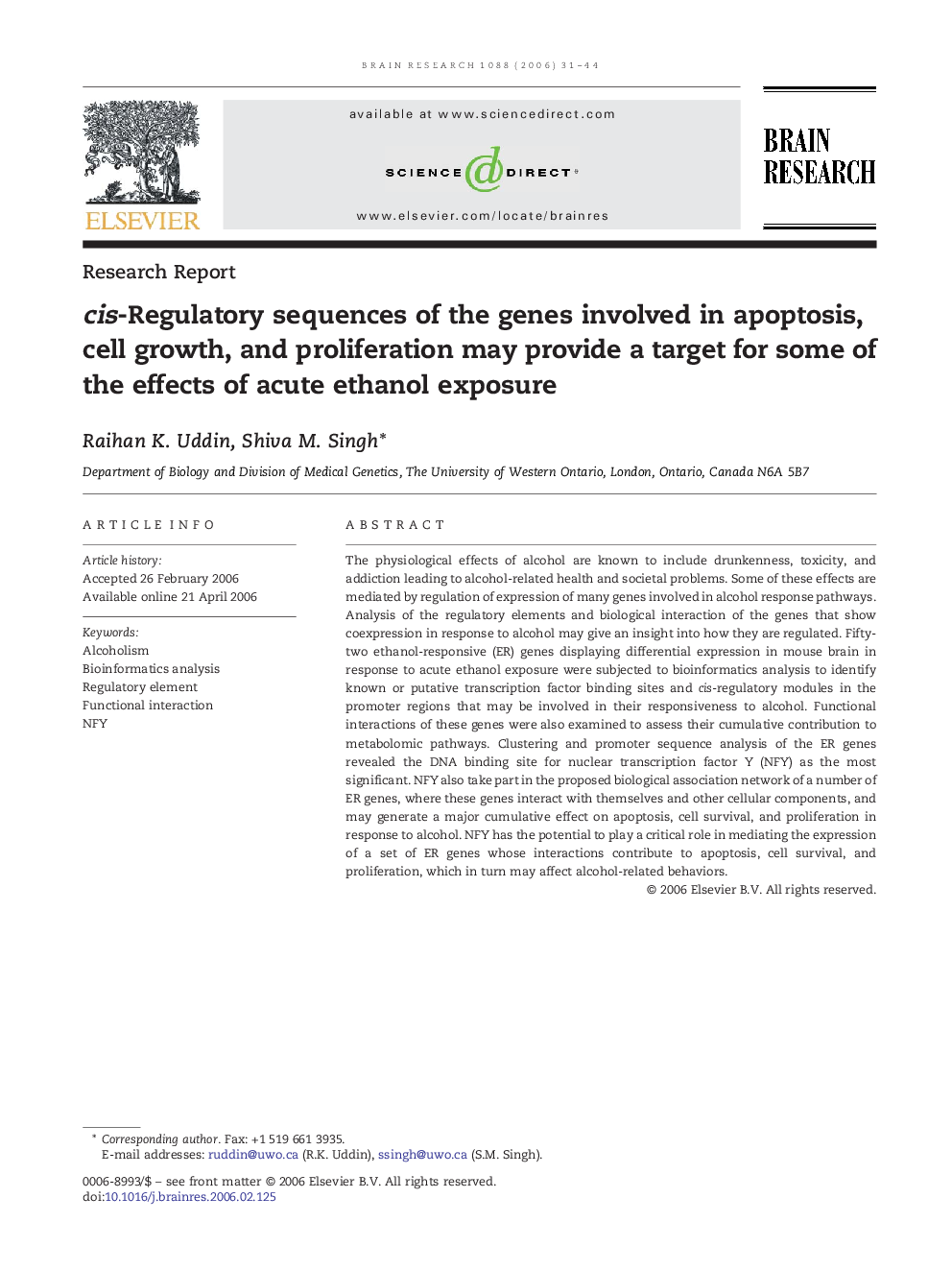| Article ID | Journal | Published Year | Pages | File Type |
|---|---|---|---|---|
| 4333074 | Brain Research | 2006 | 14 Pages |
The physiological effects of alcohol are known to include drunkenness, toxicity, and addiction leading to alcohol-related health and societal problems. Some of these effects are mediated by regulation of expression of many genes involved in alcohol response pathways. Analysis of the regulatory elements and biological interaction of the genes that show coexpression in response to alcohol may give an insight into how they are regulated. Fifty-two ethanol-responsive (ER) genes displaying differential expression in mouse brain in response to acute ethanol exposure were subjected to bioinformatics analysis to identify known or putative transcription factor binding sites and cis-regulatory modules in the promoter regions that may be involved in their responsiveness to alcohol. Functional interactions of these genes were also examined to assess their cumulative contribution to metabolomic pathways. Clustering and promoter sequence analysis of the ER genes revealed the DNA binding site for nuclear transcription factor Y (NFY) as the most significant. NFY also take part in the proposed biological association network of a number of ER genes, where these genes interact with themselves and other cellular components, and may generate a major cumulative effect on apoptosis, cell survival, and proliferation in response to alcohol. NFY has the potential to play a critical role in mediating the expression of a set of ER genes whose interactions contribute to apoptosis, cell survival, and proliferation, which in turn may affect alcohol-related behaviors.
